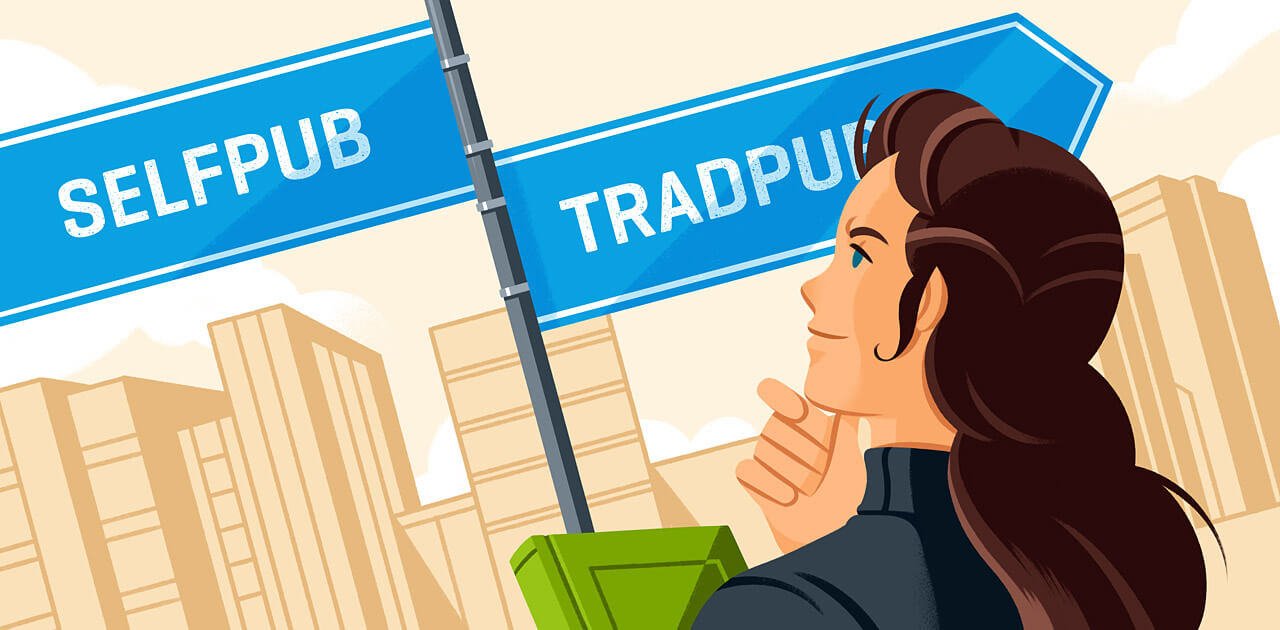The book industry is evolving enormously with time, and so do professional service providers like book writing services and self-book publishing services. For most people, writing a book has been a longtime ambition or a professional goal, and they have self-publishing and traditional publishing as the two primary options.
Self-publishing and traditional publishing are radically different, even though they both lead to the same result of having a book for sale. So, before wasting any time, let us dig into the pros and cons of the primary options of book publishing.
Self-Publishing
Authors can skip the traditional publishers and publish independently with numerous self-publishing platforms available. To understand how well authors have embraced it, consider that self-published books now account for 30% to 40% of all eBook unit sales. In addition, the rise of online bookshops has boosted sales of eBooks, which are independent authors’ preferred formats.
After you’ve finished writing your book, get it professionally proofread and designed by self book publishing services. Most companies charge an upfront fee, after which you own the rest of the earnings from book sales, and you start getting paid right away!
Pros Of Self-Publishing:
Every Book Can Be Published
Traditional publishers would consider niche novels and books by first-time authors to be hazardous ventures, but they can now be published. Furthermore, self-publishing normally takes only a few days or weeks to release the book to the world. Moreover, it can quickly be done by hiring a professional self book publishing service.
Authors Have Creative Freedom.
You can employ self book publishing services offering editing services and book designers who will understand your book’s concept and work with you to develop something that matches your imagination and what you desire from your book.
It’s Convenient To Make Changes Even After Publishing
Textual and design modifications can be made even after the book has been released because books are not produced and stored in advance. If your book cover, for example, isn’t appealing enough, you can quickly change it with a fresh, more appealing design. Also, any previously overlooked typographical problems can be fixed.
The Shelf Life Of Books Is Extended
Traditionally published books have a finite shelf life in the bookshop and are frequently removed to make room for freshly released books. On the other hand, self-published publications are always available on online retailers like Amazon and can be found and purchased months or years after publication.
Cons Of Self-Publishing:
You Need To Self-Market Your Book
Prepare to devote time to creating and updating a blog, building a mailing list, soliciting reviews, promoting your book via social media and book sites, contributing articles to websites and blogs that can drive traffic to your page, and publishing your book across multiple platforms, and so on. This isn’t necessarily a drawback; some authors prefer this amount of control and enjoy developing their imagination.
Your Book Might Not Be Available In Bookstores
Because you won’t be able to take book returns, unlike a traditional publisher, convincing retailers to carry your book will be challenging.
Also Read This: 5 Steps To Advance Steps For Professional Growth In Your Career
What is Traditional Publishing?
A publisher is a gatekeeper to your audience in the traditional publishing paradigm, and a publishing agency is your first point of call. The process starts with you looking for and hiring an agent to pitch your book proposal to a publisher. A publisher will sign you and give you a book advance if your luck is in. You will earn royalties after your book is released and begins to sell. On the other hand, the royalties don’t start until the book has sold enough copies to break even—that is, when the Publisher has recouped the book advance from royalties on your early sales.
Pros Of Traditional Publishing:
It Brings Respect
When a traditional publisher signs an author, it acts as validation for many authors. However, you must have produced a decent book if a publisher finds it worthy and spends resources on it.
You Don’t Have To Pay Anything
Because the Publisher covers all publication expenses, lower-than-expected sales will not result in a financial loss. Therefore, you are not required to refund any book advance amount if your book does not sell.
The Publisher Handles Everything
The Publisher offers editing, proofreading, design services, printing, warehousing, and distribution. They would also coordinate editorial reviews and book signing activities. Having someone else handle all of this is a massive relief for authors, who can then focus more on writing.
Your Book Will be Sold In Renowned Bookstores
Retailers would be more eager to carry your book. The traditional publishers have a robust distribution network and offer a book returns option. This increases the likelihood of it being discovered and purchased.
Cons of Traditional Publishing:
It Takes A Hefty Amount Of Time
New authors are more likely to be rejected several times before landing a book contract. However, even if a contract is signed, the book will not be published and available in bookshops for another year or two.
Limited Creative Control
You wouldn’t have total control over your book’s creative components, such as its title, cover design, and editing.
Lower Royalties Rates
Traditional publishing has lower royalty rates than self-publishing.
Conclusion
So, hopefully, you now have a solid idea of which path you should choose. Make an informed decision, bearing in mind all of the needs of your publications as well as the objectives you’ve established for your book.


